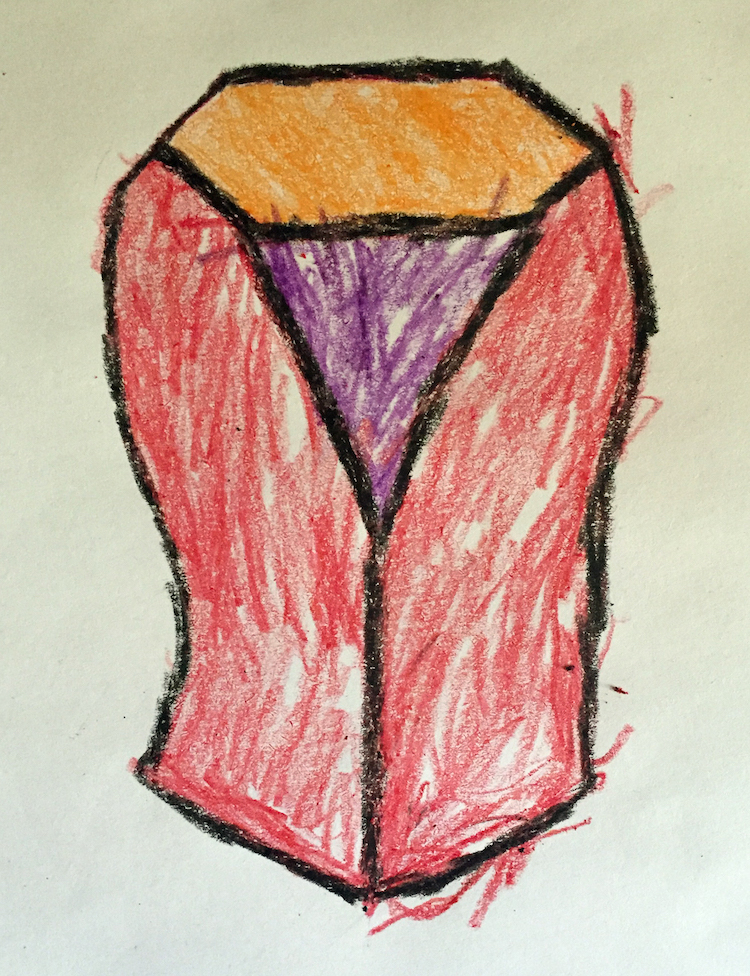 Health & Physiology
Health & Physiology
Scutoid cell blocks: a (energetically) cheap way of life
A new geometric shape has been described in epithelial cells. This type of cells blocks, called Scutoids, are necessary for curving the epithelial tissues and enables the cells packing efficiently into three-dimensional structures.

Breaking news! Believe it or not, we are formed by cells! Well, to be honest, we know this since 1665 when Robert Hooke discovered and named the fundamental constituents of all animals. Hooke performed pioneering microscopy and biological studies but, in addition, he was also a professor of geometry and a renowned physicist...wow! He coined the term "cell" because he found a resemblance in the way they pack together with the cells of a honeycomb. Curiously enough we have also used tools from microscopy, biology, geometry, and physics to dig deeper into the cell packing problem.
Understanding how cells are shaped and packed is indeed a key question because those properties are directly related to their functionality. In this context, epithelial cells are 'the building blocks' of all animals. They move and pack in a finely controlled way during embryonic development to carry out the transition from an early embryo (a simple structure formed by a few cells) to a complete individual with complex organs such as a liver or a pancreas. You can actually see epithelial cells right now: take a look at the dorsum of your hand. A close look will reveal a sort of polygonal organization (a sort of honeycomb as Hooke described). The way in which these cells are arranged in that 2D representation has been widely studied. However, less is (was!) known about the way cells organize and pack in 3D (e.g. as you go deeper your skin surface).
A group of us, formed by biologists, mathematicians, engineers, and physicists, joined efforts to understand this. In particular, we were puzzled about what happens to those cells when tissues are subjected to curvature (because, to some degree, all tissues are!). We first developed a 3D computational tubular model (similar to a toilet paper roll) in which cells tesselate the space without leaving empty spaces. This model followed the principles of Voronoi Diagrams (a common tool used to understand geometrical organization). When we checked the predictions of this model, we observed a strange thing: cells had peculiar properties in regards to their topology (how they were connected to their neighbours). After carefully examining this from a mathematical perspective, we concluded that the existence of curvature in a tissue forces the cells to adopt shapes that were previously undescribed: the scutoid.
Ok...but wait a second...what is a scutoid? Until now, it was accepted that epithelial cells had shapes similar to prisms (in flat tissues) or to truncated pyramids (in curved tissues). In both cases, the top and the bottom polygons present the same number of sides. Scutoids are a little more complicated since not only top and bottom surfaces can be different in size, but they can present a different number of sides (see the figure of this "break"). What about the name? Well, there is an official, but also an un-official, reason:
1) Official: Its resemblance with the scutellum - the dorsal part of an insect thorax.
2) Un-official: the phonetic similarity with the surname of one of the corresponding authors, Luisma Escudero.
Now we need to go back to the biology. Thus, following our computational predictions, we took the lab gloves, the pipettes...and we worked hard to interrogate some of our favourite pets (the Drosophila fly and the zebrafish). We used microscopy techniques combined with computer-aided processing tools and found that, after a lot of hours of processing and analysis, scutoids were indeed a building block in the epithelial structures of these organisms when tissues have curvature. We were so happy!
This adventure did not finish here though, because we wanted also to answer the following question: why did nature decide to pack cells using scutoids? Thus, we put on our physicist hats and analysed the problem trying to find the advantage that scutoids mean to tissues. Again, after blackboards full of equations (and some headaches) we found the answer: scutoids allow tissues to optimize energy expenditure. This actually makes sense since, after aeons of evolution, nature is wise and does not want to waste energy in vain: scutoids are (energetically) cheap!
In summary, if a tissue is curved surely scutoids will be there; and nature loves curvy things: all animals are formed from tissues that bend into complex shapes! Moreover, our discovery opens new avenues of research. For example, in tissue engineering to make artificial organs copying nature's solution. We like to think that Robert Hooke would have enjoyed our findings...and you too!
Original Article:
P. Gomez-Galvez et al., Scutoids are a geometrical solution to three-dimensional packing of epithelia. Nat Commun 9, 2960 (2018)Next read: Recovering data you have never seen by Rik Voorhaar
Edited by:
Massimo Caine , Founder and Director
We thought you might like
The importance of being tested
Jul 15, 2020 in Health & Physiology | 3.5 min read by Giulia GiordanoMore from Health & Physiology
How obesity can improve the efficacy of cancer treatment: role of the sex hormone estrogens.
Dec 3, 2025 in Health & Physiology | 3.5 min read by Eloïse Dupuychaffray , Carole BourquinTobacco smoking and other exposures shut off cancer-fighting genes
Aug 31, 2024 in Health & Physiology | 3 min read by Jüri Reimand , Nina AdlerA hidden clock that times cytoplasmic divisions
Aug 30, 2024 in Health & Physiology | 3 min read by Cindy OwWhen two kinases go for a dance
Aug 2, 2024 in Health & Physiology | 4 min read by Ioannis Galdadas , Francesco Luigi Gervasio , Pauline JuyouxAwakening the thymus to cure SARS-CoV-2 infection: a matter of genes
Jul 27, 2024 in Health & Physiology | 3.5 min read by Stefano Marullo , Cheynier RemiEditor's picks
Trending now
Popular topics


